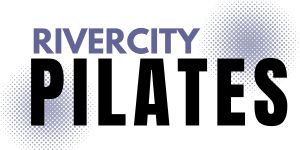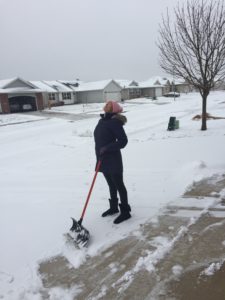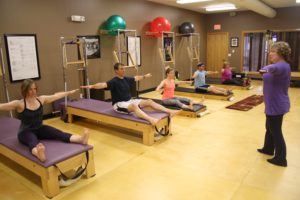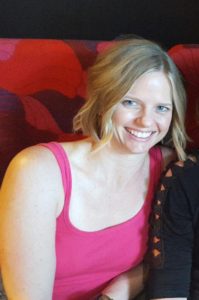One of my clients said to me,” I decided I have a new goal: I want to maintain my height as I age!” I LOVE that! What a great goal! Did you know that Research from the Baltimore Longitudinal Study of Aging found average woman between 30 and 70 loses 2 inches? What if you decided to keep your body healthy, strong and tall as you aged as one of your fitness goals? What would that look like?
First let’s look at why we shrink as we age. What actually causes you to get shorter as you age?
- You can lose height because the discs between the vertebrae in the spine dehydrate and compress
- The aging spine can also become more curved, and vertebrae can collapse (called a compression fracture) due to loss of bone density (osteoporosis).
- Loss of muscles in the torso can also contribute to stooped posture.
- Even the gradual flattening of the arches of the feet can make you slightly shorter.
So what can we do to slow the shrinking process?
You may be able to slow shrinkage by taking steps that will help protect your bones and muscles.Things like consuming adequate calcium, vitamin D, and other bone-healthy nutrients; not drinking alcohol to excess; and not smoking will help! Doing weight bearing exercise and strengthening the muscles that support your spine is also very important.
If you are wondering what type of exercises might fall in to this description, let me tell you about my favorite two!
#1 is walking. I love walking as part of your fitness and health plan because it really doesn’t take a lot of special effort or equipment. All you need is you and a place to walk. It’s also a skill that we all already have so you don’t have to learn anything new. Besides being a great weight bearing whole body exercise it is also great fro keeping your heart healthy.
My other favorite type of exercise is Pilates. The Pilates method of exercise is designed to teach you how to strengthen your body in a way that strengthens and balances out the muscles along your spine which is exactly what we all need as we age to help us shrink less. Many of the Pilates exercises are designed to move your spine in a way that actually hydrates the disc in between the vertebrae, helping you maintain a healthy spine. All of the exercises focus on moving from your center and strengthening your core muscles that help you maintain your great posture and avoid stooping. The exercise method also focuses on always working in alignment which basically means every time you are doing Pilates your are practicing your strengthening your ” good posture muscles”.
Want to learn more about how learning the Pilates method can help you keep your height? Give us a call and schedule your complimentary private session today!
http://www.berkeleywellness.com/self-care/preventive-care/article/why-you-shrink-you-age

 We had our first snow last weekend and like every year after the first snow I heard lots of clients talking about their achy backs from shoveling. As winter settles in here in Iowa I’d like to challenge you to start thinking of your shoveling duties as part of your movement and fitness routine. After all, walking for 20 minutes or more while you use a shovel to pick up and throw heavy wet snow is work and can be a great way to get some exercise! Like any exercise program though you’ll want to make sure you are doing it properly so that you get the maximum benefits without getting hurt!
We had our first snow last weekend and like every year after the first snow I heard lots of clients talking about their achy backs from shoveling. As winter settles in here in Iowa I’d like to challenge you to start thinking of your shoveling duties as part of your movement and fitness routine. After all, walking for 20 minutes or more while you use a shovel to pick up and throw heavy wet snow is work and can be a great way to get some exercise! Like any exercise program though you’ll want to make sure you are doing it properly so that you get the maximum benefits without getting hurt! Bend your knees when you pick up the snow to throw it. That moment where you pick the snow up and throw it is an important one. Make sure you end your knees, engage your abdominal muscles and keep your back lengthened!!
Bend your knees when you pick up the snow to throw it. That moment where you pick the snow up and throw it is an important one. Make sure you end your knees, engage your abdominal muscles and keep your back lengthened!! eep me warmer!
eep me warmer! I started a new Beginner Pilates Mat series this week, and at the beginning of class I found myself saying something to this group of new Pilates students that I felt like more people should hear. I told them that they probably wouldn’t be sore after their first class and that’s OK and it’s actually a good thing. I told them they may feel some muscles they haven’t used in awhile and have what I like to call “muscle awareness” but really the last thing I wanted was for me to check in with them in a few days and find out they were so sore it almost hurt move! I could just feel a sense of relief spread through the room when I said this. My guess is that many of my participants who had finally gotten the courage to try Pilates, were already dreading how sore they might be after their first class.
I started a new Beginner Pilates Mat series this week, and at the beginning of class I found myself saying something to this group of new Pilates students that I felt like more people should hear. I told them that they probably wouldn’t be sore after their first class and that’s OK and it’s actually a good thing. I told them they may feel some muscles they haven’t used in awhile and have what I like to call “muscle awareness” but really the last thing I wanted was for me to check in with them in a few days and find out they were so sore it almost hurt move! I could just feel a sense of relief spread through the room when I said this. My guess is that many of my participants who had finally gotten the courage to try Pilates, were already dreading how sore they might be after their first class. I am very excited to focus on mindfulness at Rivercity Pilates this month. I have to admit, a few months ago I am not sure I really understood mindfulness. I am still not sure I do, but I am excited to share a few insights from my experience taking the Mindfulness-Based Stress Reduction Program through the University of Iowa.
I am very excited to focus on mindfulness at Rivercity Pilates this month. I have to admit, a few months ago I am not sure I really understood mindfulness. I am still not sure I do, but I am excited to share a few insights from my experience taking the Mindfulness-Based Stress Reduction Program through the University of Iowa.